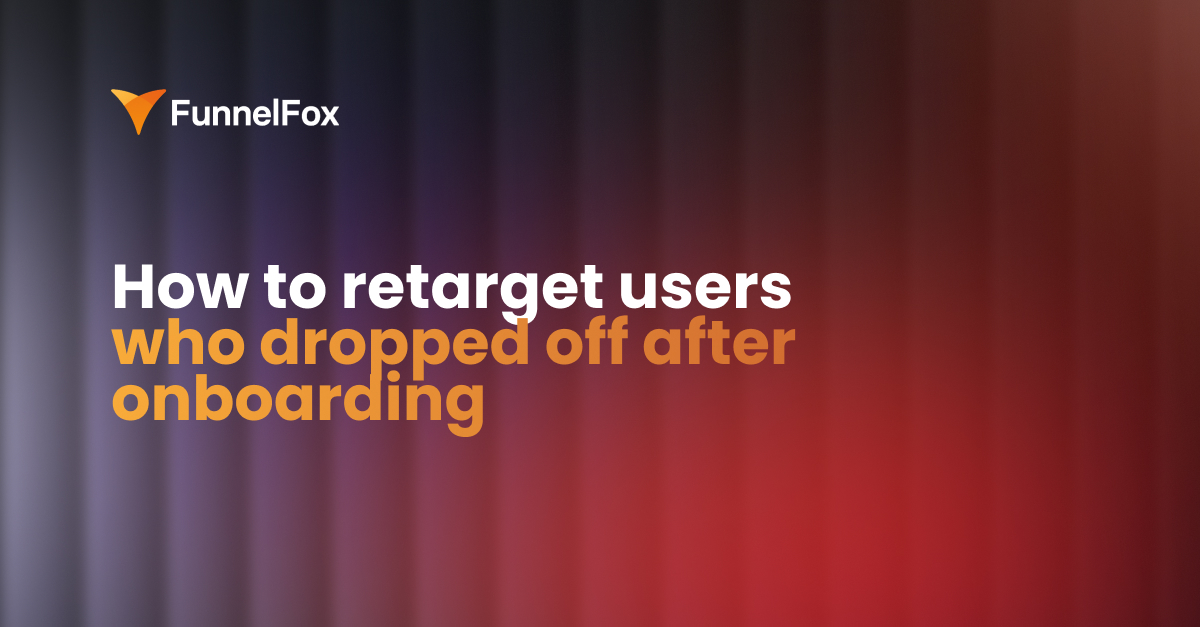Kirill Makarov (web funnels and paid ads expert, webfunnels.club founder, ex-Zing Coach, Growfood, and Mobio) analyzed 311 funnels and shared his findings in our recent webinar. Kirill also outlined funnel trends in 2024 and his expectations for the next year. We’ve summarized the main takeaways in this article, but you can also view the full webinar recording, which you’ll find at the end of the article.
State of the web funnels market in 2024
Over the past year, Kirill has been monitoring the mobile market players and compiled a dataset of 311 funnels enriched with details on traffic, ad creatives, and user reviews. Here are the key findings:
- 63% more web funnels launched
- 600% more creatives identified by spy services
These insights support Meta’s report of a 50% YoY growth in web-to-app spending and clearly show that web funnels are not a passing wave but a consistent and rising trend.
Number of quiz-based flows, YoY 2024 vs 2023
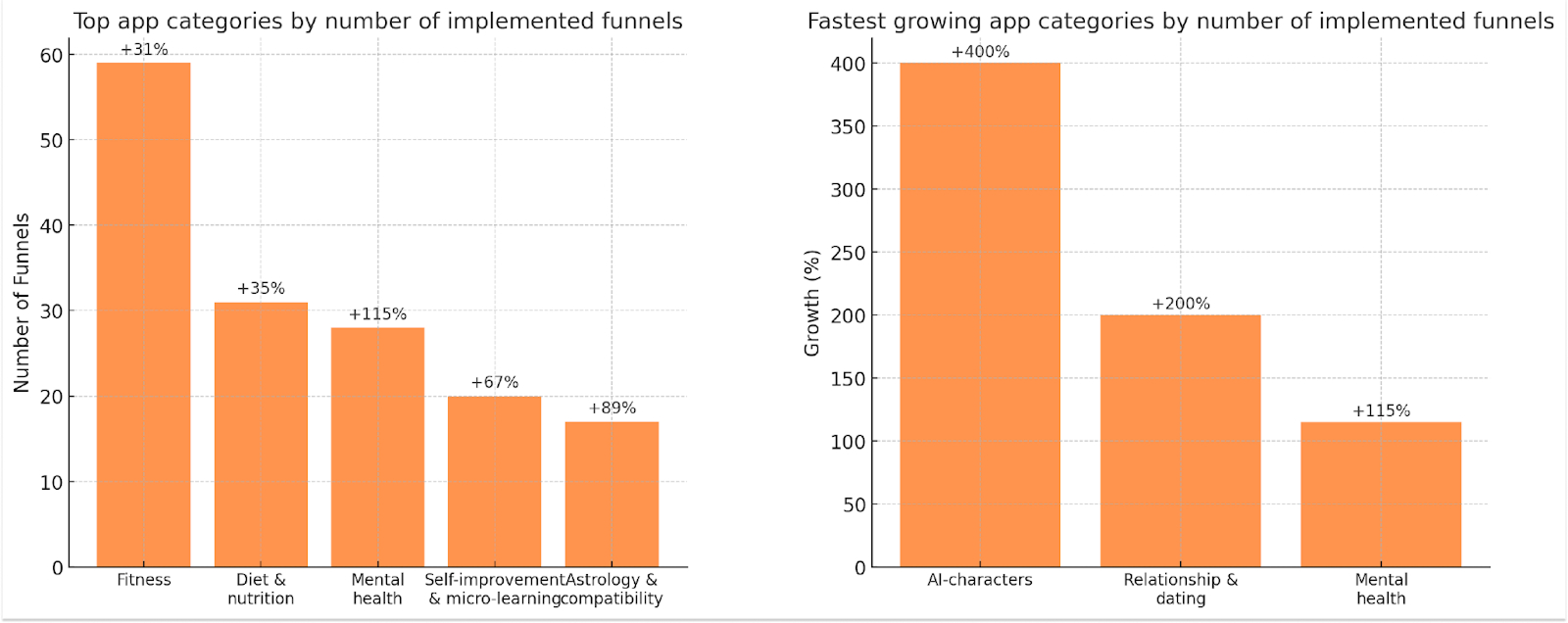
Number of creatives, YoY 2024 vs 2023
While the number of quiz-based web funnels provides some insights, it doesn’t tell much about the marketing activity in terms of ad spend, so Kirill also counted ad creatives. Combined with reviews and traffic data, creatives count serves as a reliable proxy metric for assessing marketing activity.
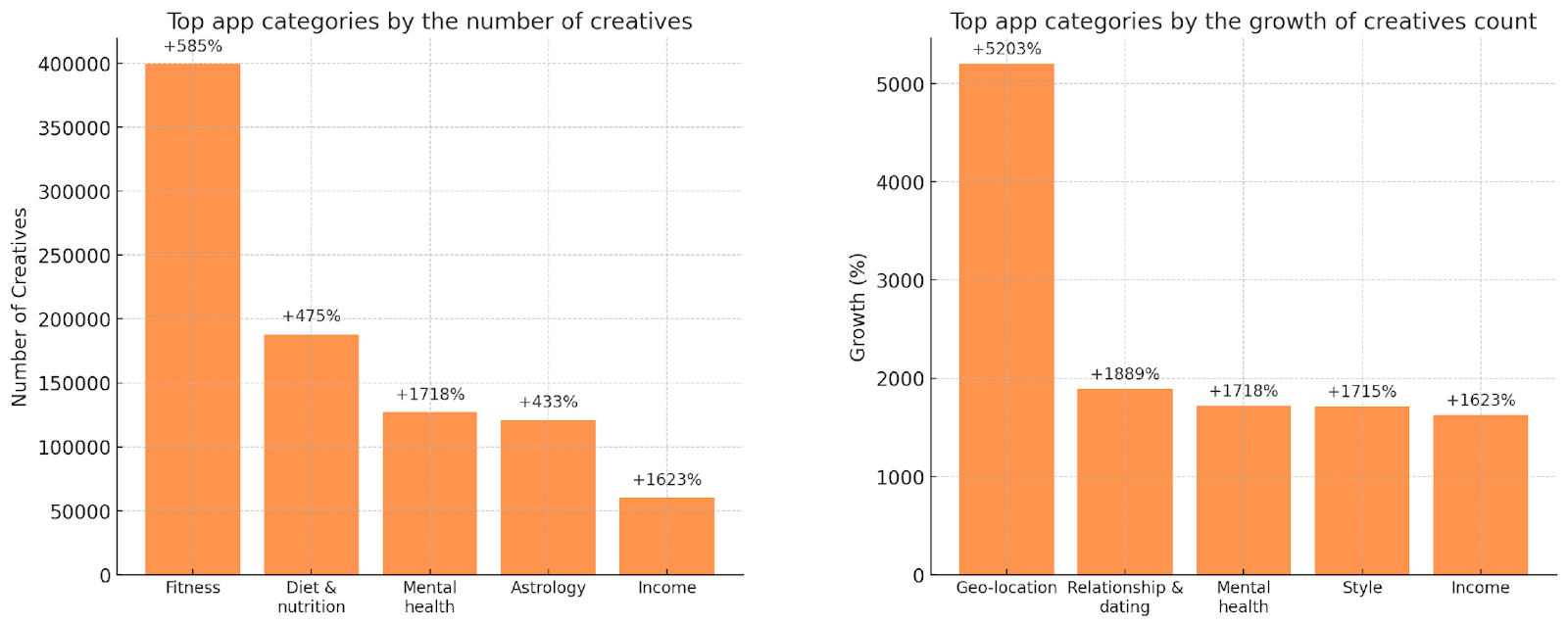
Brands’ web funnels charts
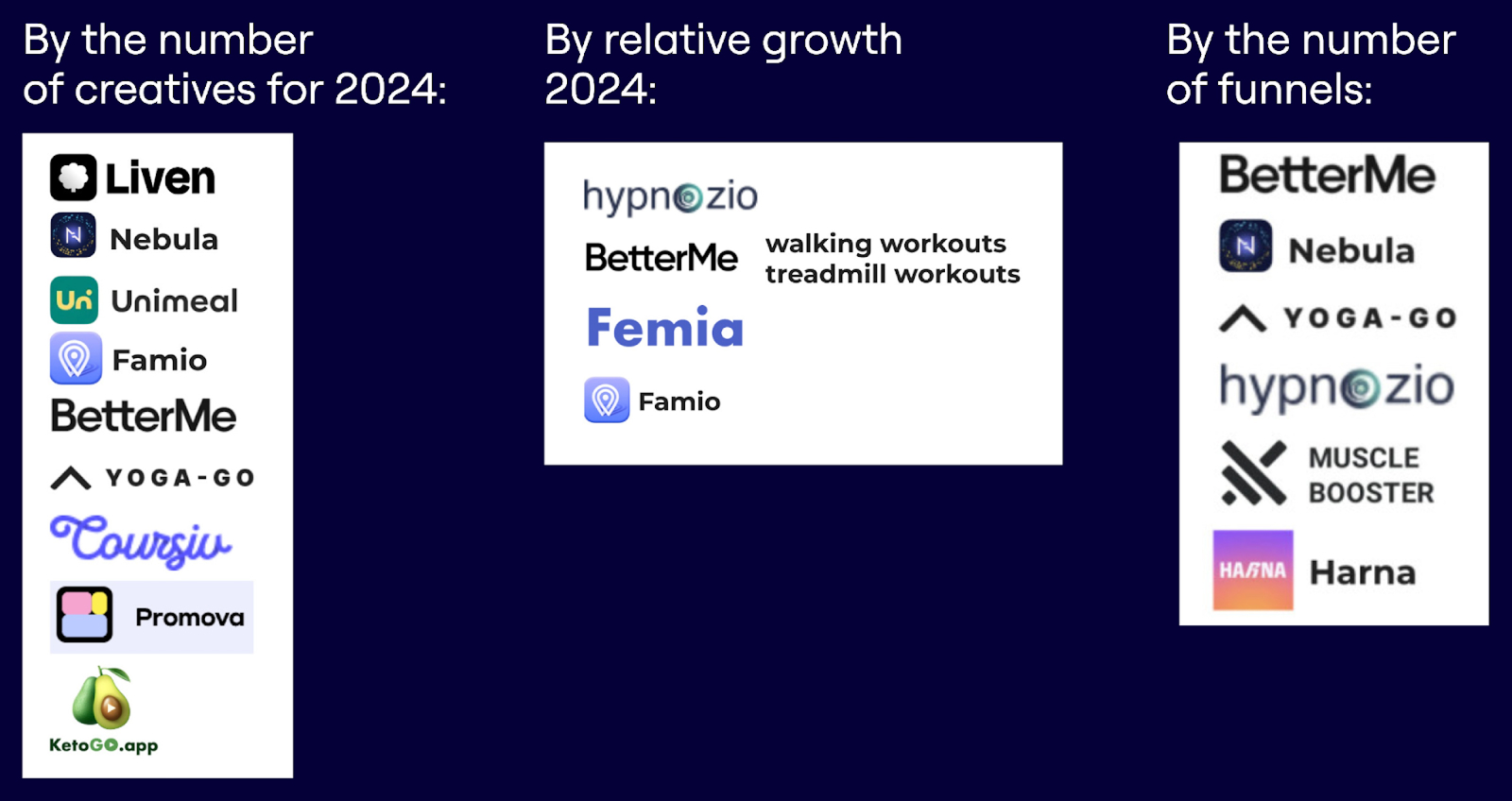
7 web funnels trends that defined 2024
1. Brands launch multiple web funnels and expand into related categories
Brands are launching multiple web funnels in related categories to reach more audience segments.
BetterMe, for example, expands beyond its core category — fitness — and tailors their quiz-based funnels to mental health, ADHD, and relationships. Another case is Hypnozio with various funnels showing how hypnotherapy could help with weight loss, alcohol addiction, relationships, and so on.
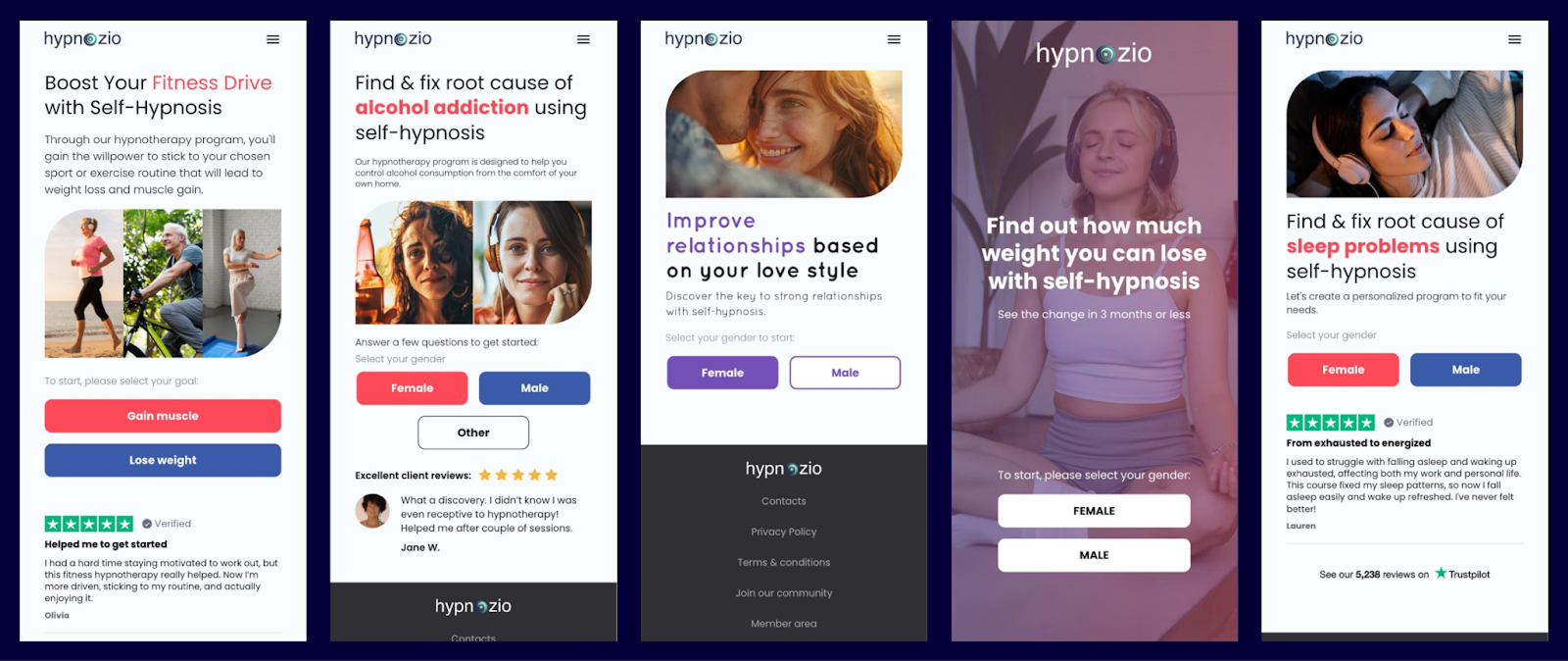
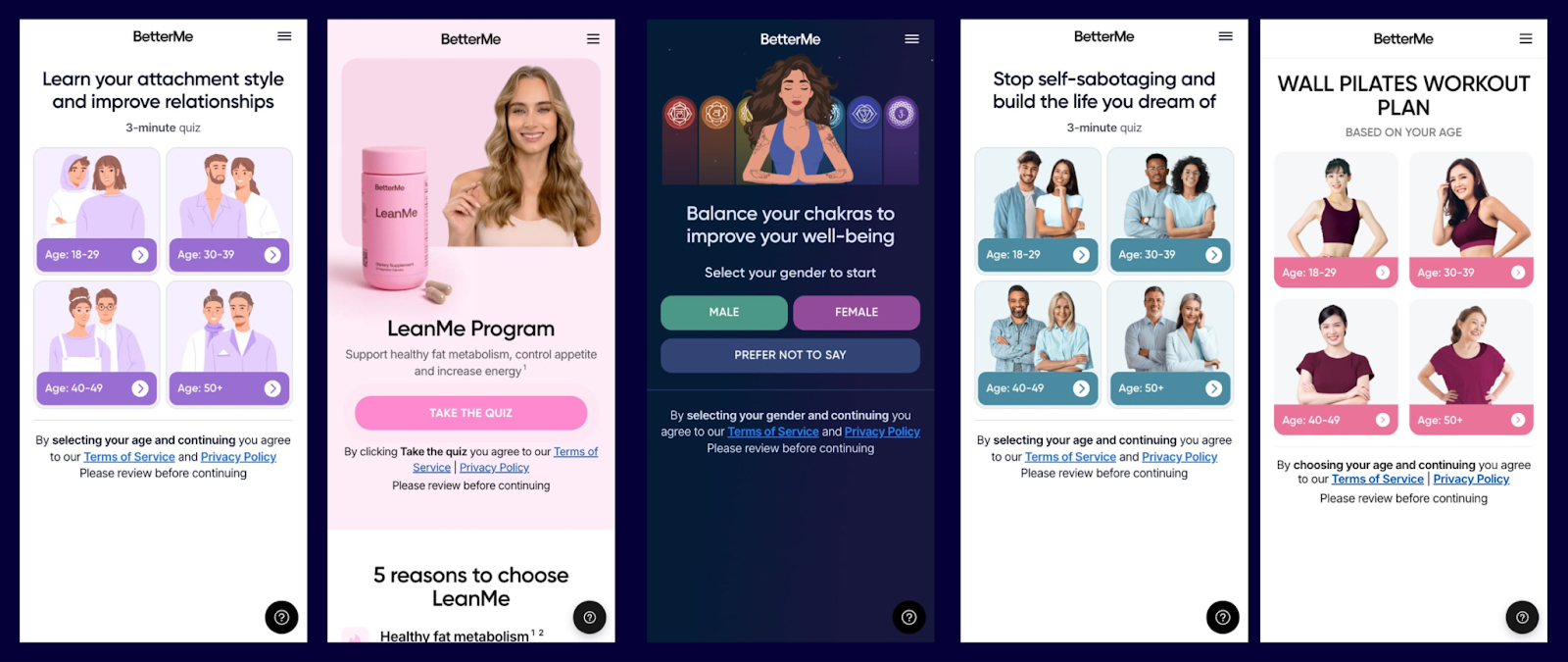
2. Interactive onboarding mechanics
In 2024, many apps introduced engaging and interactive onboarding mechanics—e.g., asking users to place their finger on the camera to measure their pulse. Though such interactive elements can initially lower onboarding completion rates, the increased conversion often makes up for it—users who complete these steps experience an “aha moment” and become more motivated.
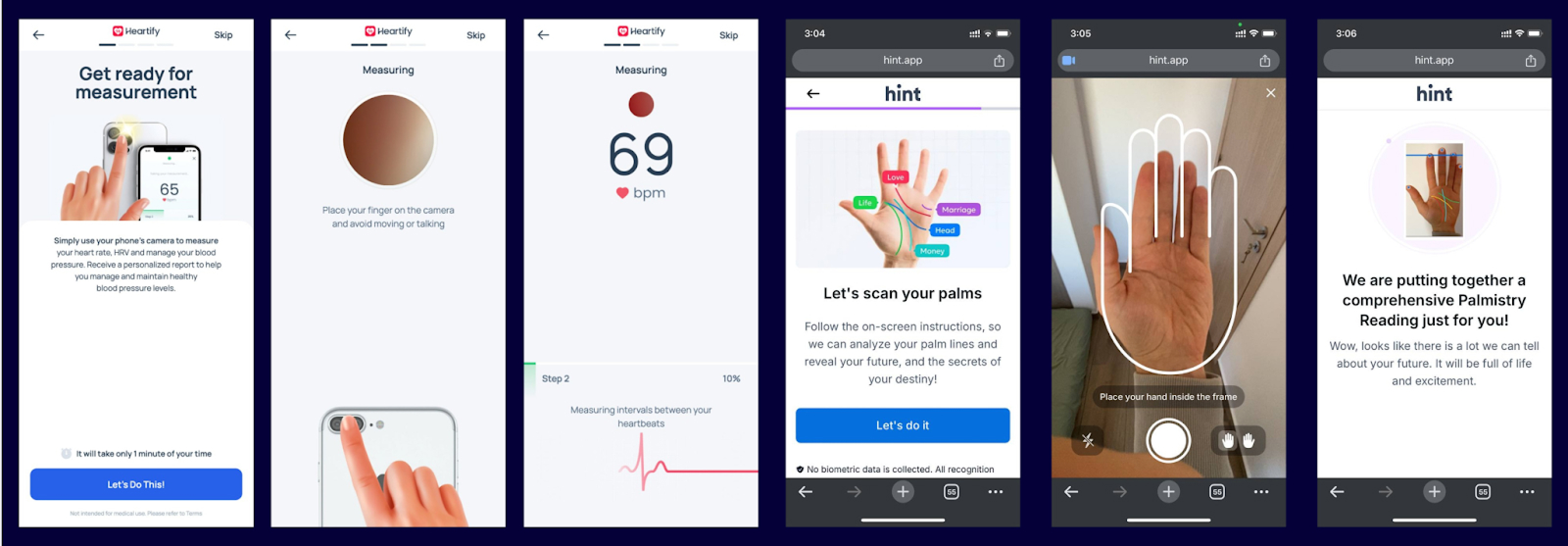
↘ Learn how to build high-converting onboarding in 6 steps
3. Intro offers and 3-options paywalls
In 2024, many apps have shifted away from the paid trials model to the intro discount offer combined with the three-option paywall.
An intro offer is when an app offers a 50-70% discount on the first subscription period. After this discounted period, the subscription renews at full price. It makes it easier for users to try the product by reducing the upfront financial commitment.
As for the three-option paywalls, they offer various pricing tiers or subscription durations, so users can choose the option that best fits their needs and budget. This approach helps to maximize conversions by appealing to a wider range of preferences.
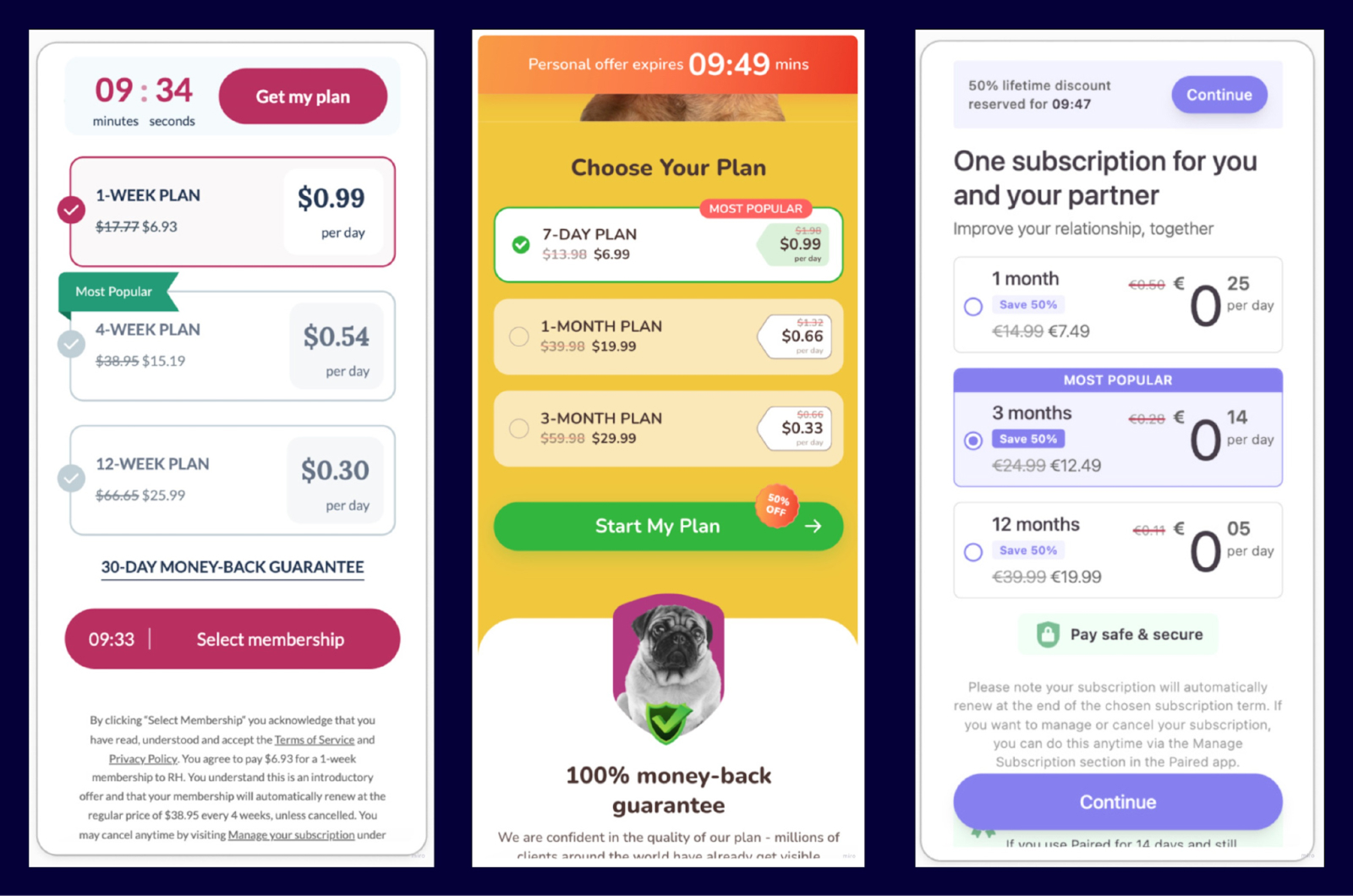
4. Apple Pay as the primary payment method
Another trend is that Apple Pay has become the primary payment method. While previously limited by non-native browsers and WKWebView support, its adoption grew significantly after WKWebView enabled Apple Pay integration in early 2023. Now, the Apple Pay button is the default payment option and the most popular approach on the market.
↘ Learn more about payments in web funnels
5. Additional monetization through upsells after the purchase
In 2024, apps were increasingly implementing various types of upsells after the initial purchase—from one-time offers and additional subscription options to cascades of various upsells.
Noom leads this trend with its extensive upsell strategy: the app features six different upsells and two upgrade options, which totals 25 screens after the initial purchase. While Noom used to be the only app using this approach, now most funnels include at least one upsell offer.
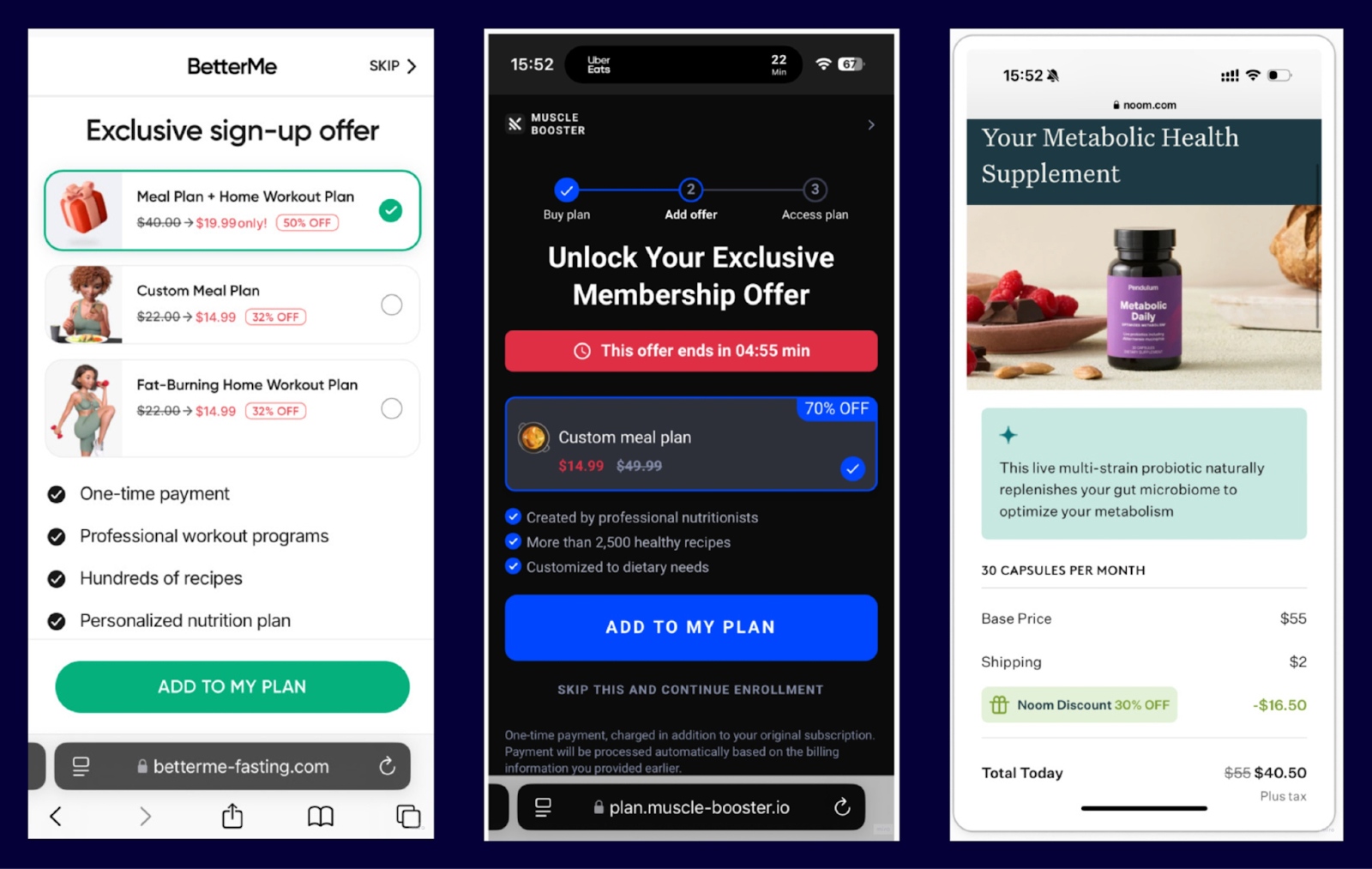
6. Raise of Tik Tok as a UA channel for web funnels
The popularity of TikTok as a traffic source has risen in 2024, and it turned out to be an effective channel for web funnels. Now, a lot of mobile projects across various categories are launching on TikTok and rely on it heavily. Some apps even spend more on TikTok advertising than on Meta.
7. Main market regulations
As the web funnels sector grows, new regulations appear. The FTC’s “Click to Cancel” law, effective July 2025, is the key development of 2024. This law mandates easy cancellation processes and transparent subscription terms. Apps must now get explicit user consent for subscriptions and renewals, as well as to clearly state pricing and billing details.
Another regulation requires transparency about cookies. Now, apps looking to run ads in Europe and California must place mandatory cookies consent banners. If users don’t allow cookie usage, ad networks limit ad visibility.
What to expect in 2025?
- More products are to launch web funnels in 2025, including categories that weren’t on the list this year, such as gaming, iGaming, and betting.
- Regulations will likely become stricter, leading to fewer dark patterns in the market, particularly from major players. Also, some moderation will emerge—from Apple, Google Play, and payment providers such as Stripe, PayPal, and Paddle.
- CPA-based affiliate traffic can come back next year. While tracking limitations in SKAdNetwork previously hindered this model, web funnels enable accurate user tracking through UTM parameters, creating new opportunities for affiliate marketing.
- Quiz mechanics will become more comprehensive and interactive. As plain quizzes may not work for every app category, brands will blend this format with advertorials, webinar funnels, interactive features, and more.
What are the main challenges or bottlenecks when building and optimizing web funnels?
The first challenge is simply getting started. Building a web funnel is complex and involves multiple layers: user acquisition, paid ads, funnel construction, storytelling, interactive onboarding, monetization, and creating an efficient checkout process. On top of that, you need to manage infrastructure, support systems, and analytics. If you handle payments directly, there are additional challenges like dealing with chargebacks and refunds.
The next major bottleneck is running paid ads effectively. Many projects, whether they’re using web funnels or mobile subscription apps, struggle with scaling performance-driven ad creatives. Most products don’t have a clear process for creating and testing high-performing ads, relying instead on randomness or luck. In reality, only about 2% of ad creatives are scalable, so you need a solid, repeatable process to consistently produce results.
This involves constant testing of creatives, optimizing the funnel, refining landing pages, and experimenting with new approaches—all while figuring out what works and what doesn’t. It takes time, effort, and a lot of trial and error.
Tools like FunnelFox and Funnelsclub exist to simplify this “cold start” problem. These platforms aim to streamline the early stages, reduce unnecessary mistakes, and minimize failed experiments, making the process of launching and optimizing web funnels more efficient.







